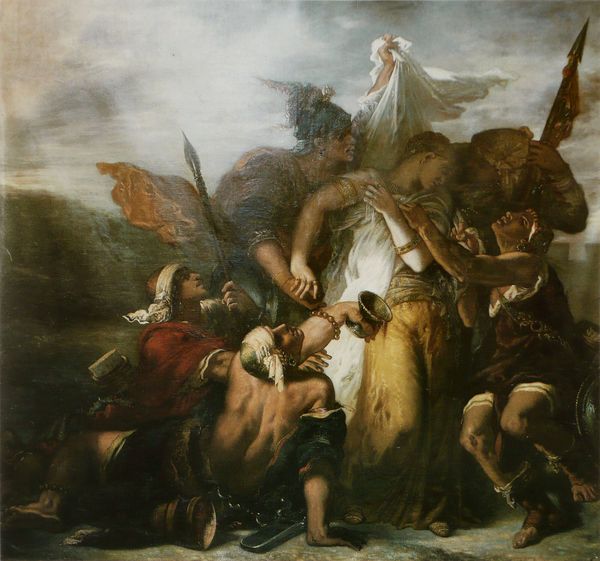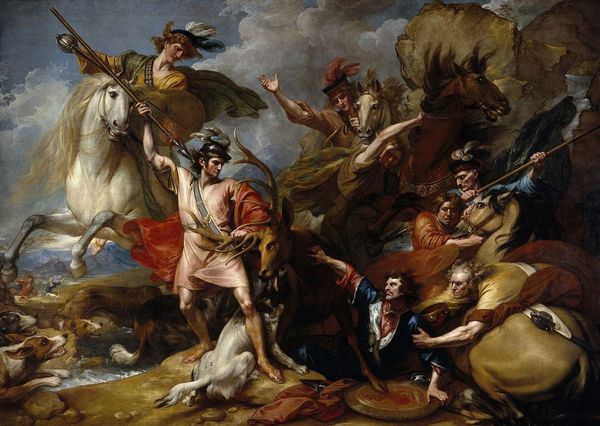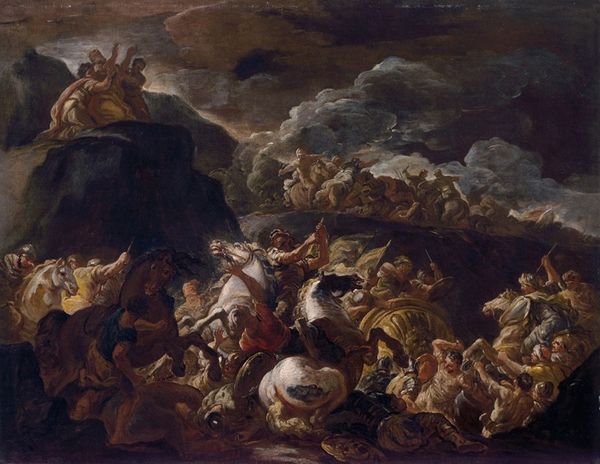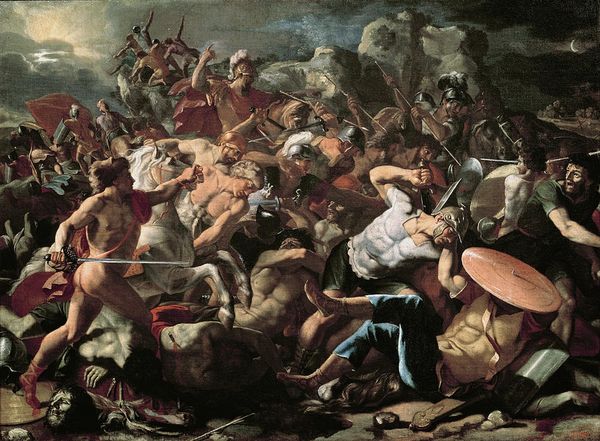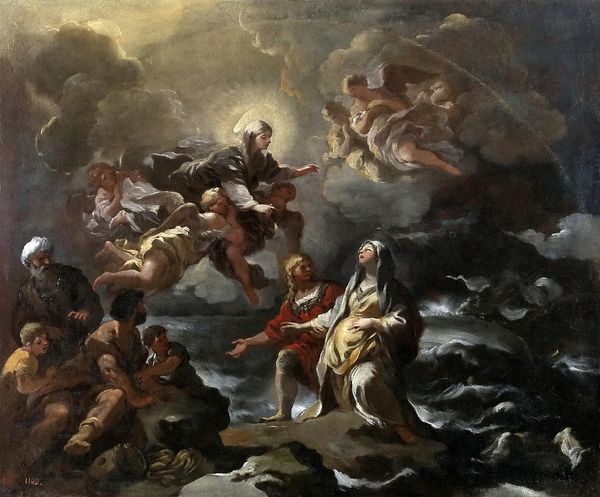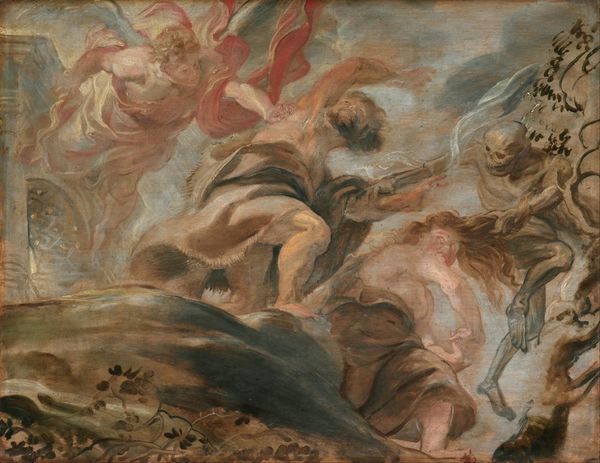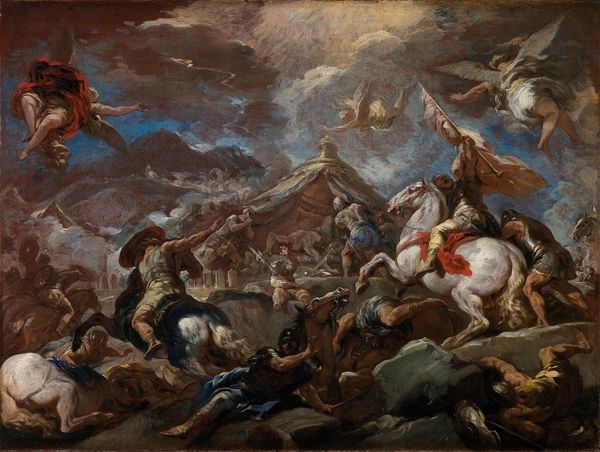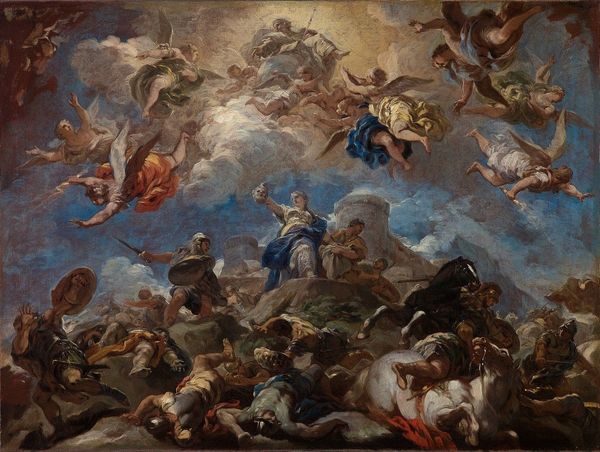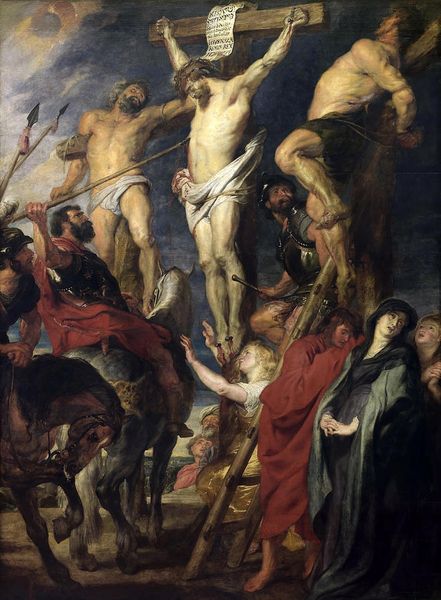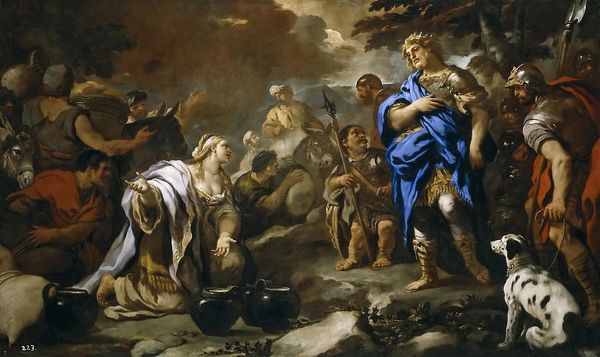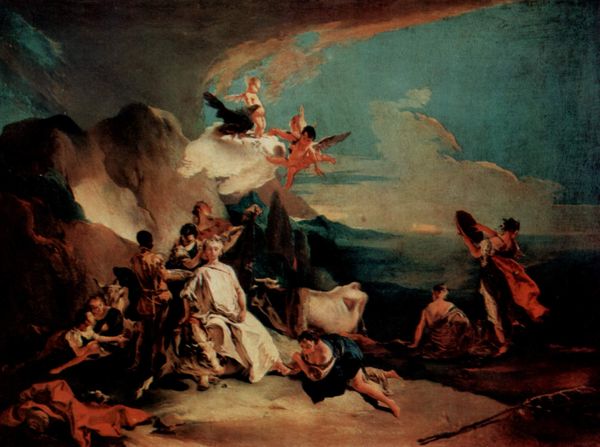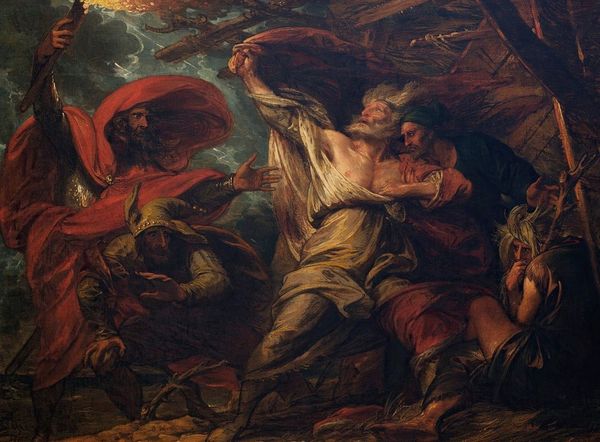
painting, oil-paint
#
narrative-art
#
baroque
#
painting
#
oil-paint
#
landscape
#
figuration
#
oil painting
#
mythology
#
history-painting
Copyright: Public Domain: Artvee
Editor: I'm immediately struck by the almost chaotic energy of this composition. It’s busy, violent, and the palette really emphasizes a dramatic struggle unfolding. Curator: That's certainly a reading supported by the subject matter. We're looking at Salvator Rosa’s “The Founding of Thebes,” an oil on canvas work that was painted sometime between 1630 and 1661. Editor: Rosa’s process here looks very active, if that makes sense? You can practically see the brushstrokes building up the forms, especially in the landscape and the figures' clothing. Tell me more about this particular narrative, as it seems so packed with tension. Curator: Indeed. It depicts the mythological founding of Thebes. Cadmus, a Phoenician prince, is instructed by the oracle of Delphi to follow a cow until it collapses from exhaustion, and then found a city on that spot. To do so, he needs water, but the spring is guarded by a dragon sacred to Ares, which Cadmus defeats, here shown at the bottom left. He then sows the dragon's teeth into the ground, from which armed men spring forth, and these men immediately begin fighting each other. Editor: Ah, the seeds of conflict quite literally sown into the city’s very origin. This is resonant when we think of historical and present-day narratives surrounding power and city-building. The drama feels incredibly gendered too; we see violence carried out by the men, and a hovering, possibly guiding or intervening female figure. Curator: Good eye. The floating figure is Pallas Athena, also known as Minerva, the goddess of wisdom, warfare, and crafts. Notice her attributes—helmet, shield, spear—and her placement watching over Cadmus. It’s important to remember that these works are also objects circulating within networks of patronage and exchange. How does the use of oil paint, a costly material at the time, further signify wealth, influence and the patron’s status? Editor: That’s a great point. Understanding the raw materials also speaks to the level of skill and labor that went into its creation. For contemporary viewers, especially, it's crucial to acknowledge what underpinned artistic production during that era and whose stories were privileged in such artistic commissions. In doing so, we ask, whose foundation are we really looking at? Curator: A truly provocative question to pose as we consider the historical impact of paintings such as these and their role in canonizing historical, and mythological events. Editor: Absolutely, a seed of thought. Thanks!
Comments
No comments
Be the first to comment and join the conversation on the ultimate creative platform.
